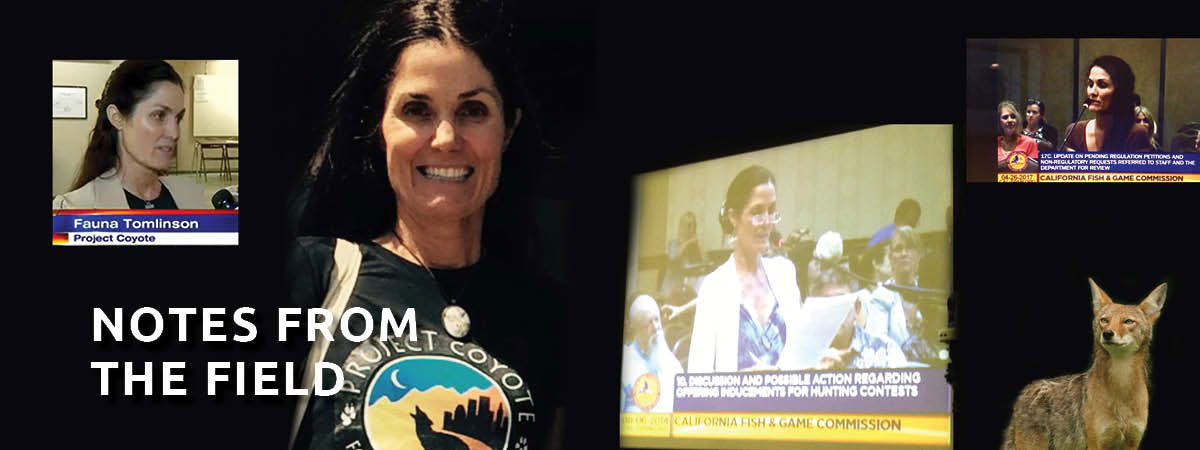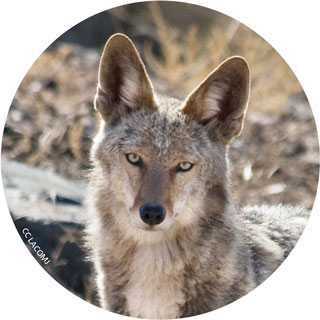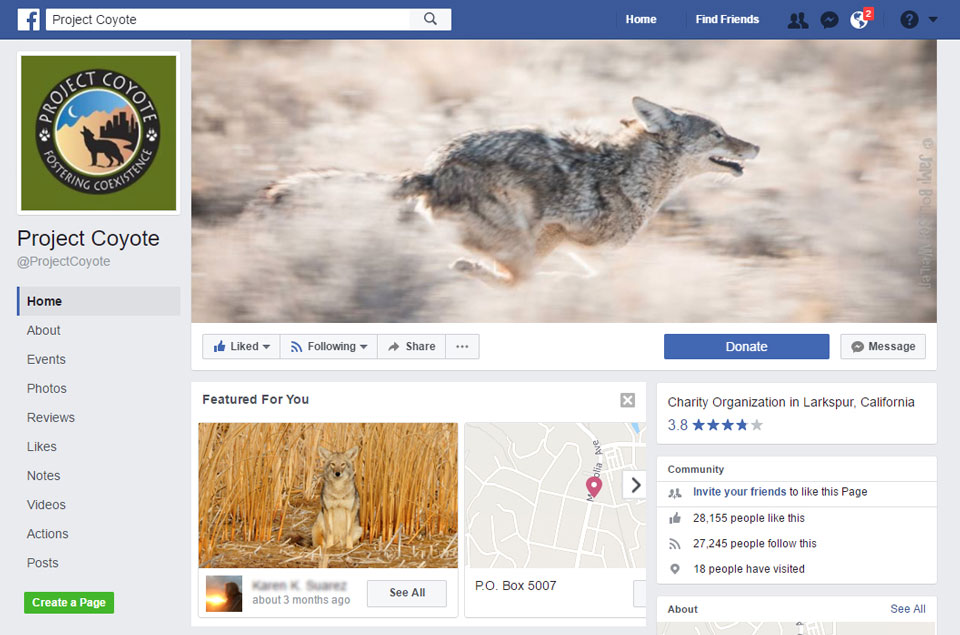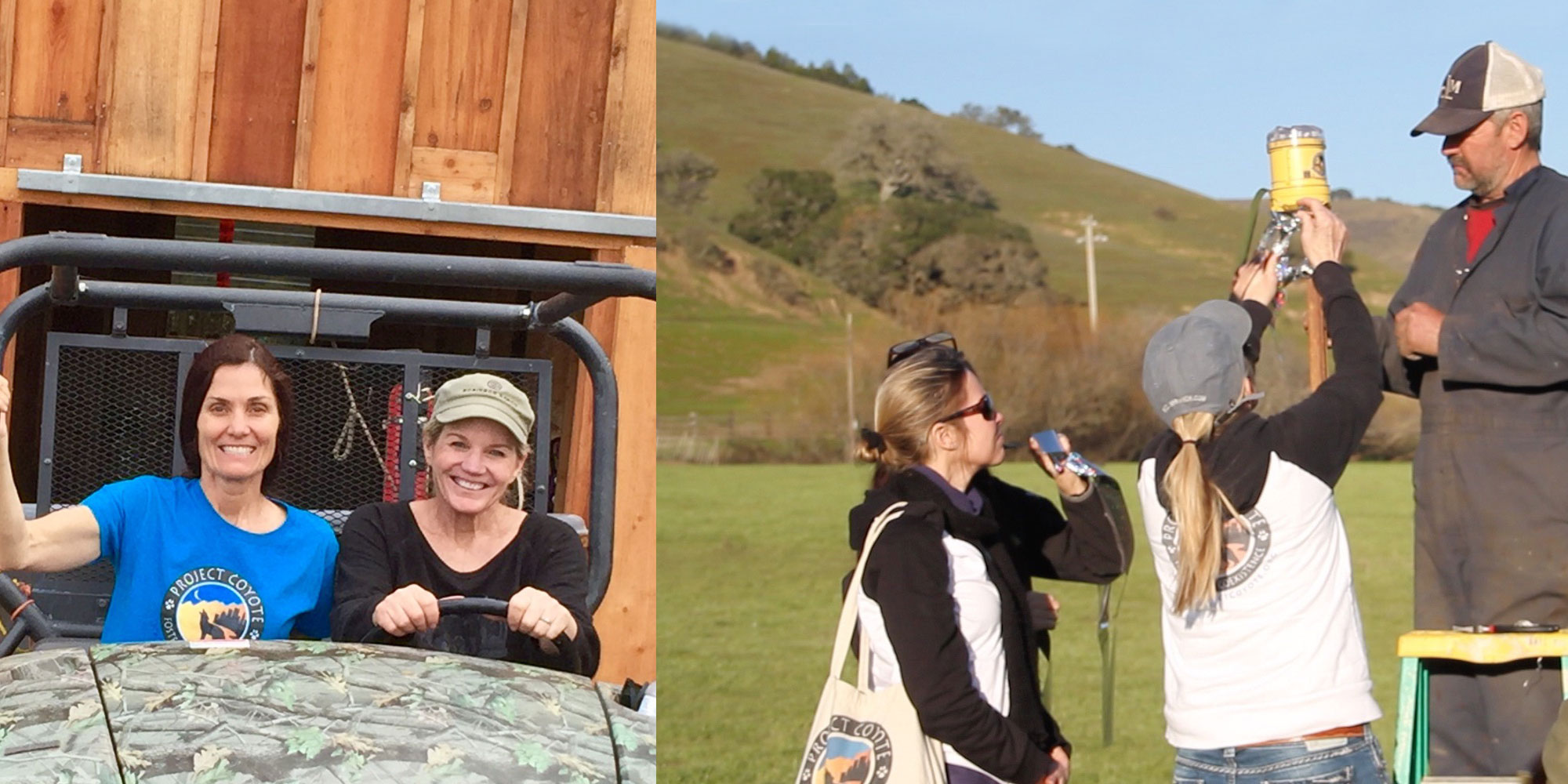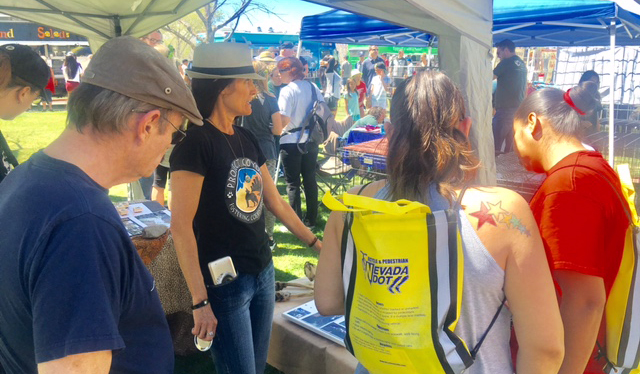Interview with Fauna Tomlinson, Wildlife Defender and Project Coyote Program Associate
We are pleased to share our interview with volunteer Fauna Tomlinson, who last December (along with Keli Hendricks, Project Coyote’s Ranching with Wildlife Coordinator) received our Guardian of the Pack award for outstanding contribution to Project Coyote. We spoke of the ways Fauna supports Project Coyote and the work she does on behalf of wildlife in the United States and internationally.
PROJECT COYOTE: Fauna – you’ve been with Project Coyote for five years; you have worked on many projects, earned a well-deserved Guardian of the Pack Award, and have the title of Project Coyote’s Program Associate. Can you tell us what tasks you undertake and something of what your work entails?
FAUNA: One of my primary tasks is to help administer Project Coyote’s Facebook page. I keep readers apprised of Project Coyote’s activities and relay information about events and news about North America’s predators and other wildlife. The information on our Facebook page comes from my readings and research, from news stories, current events, and from talking to people who work for wildlife protection. I read and research all I can find about native carnivores—especially with respect to trapping, government policy, management practices, and killing contests. Project Coyote is doing a lot of important, game-changing work to defend predators. Through social media, our supporters and readers gain valuable information about apex predators, threats to their survival, tools to reduce conflicts and promote coexistence, and how to become actively involved
in wildlife protection.
I also assist in Project Coyote’s Ranching with Wildlife Program. Project Coyote joins with ranchers, farmers, officials and community leaders to find nonlethal solutions for preventing livestock and agriculture losses to predators. Our approach is cooperative, positive, and active; we offer assistance and make recommendations that help communities or individual ranchers to protect property, livestock and pets with tools to prevent predation while recognizing the valuable services performed by apex predators on ranch and farm lands. Depending on the situation, we may conduct a site visit and recommend improved fencing, guard animals, fladry (strips of red nylon mounted to fences that move with the wind), or a variety of other innovative predator deterrents, such as nonlethal motion or light-activated light or sound devices. We field test the devices and donate them to ranchers and farmers who are eager to use these non-lethal approaches so that they can successfully ranch WITH wildlife. By relying on innovative predator deterrents rather than guns, poisons and traps, Ranching with Wildlife’s nonlethal protections reduce livestock losses while protecting wildlife that benefit ranch lands by reducing rodent and deer populations, thereby keeping the land healthy.
My most valuable function for the program is attained through my research. Our Ranching with Wildlife Program implements tools and model plans to promote coexistence. So I scour the internet for new nonlethal predator deterrent technologies—nationally and globally—to reduce livestock-predator conflicts for ranching and farming communities.
PROJECT COYOTE: It’s through your research of nonlethal devices, and your discovery of a successful technology that was developed in Africa to deter predators, that you were led to Project Coyote. Can you share that story with us?
FAUNA: Well, as I mentioned, I’ve been volunteering on behalf of animals and wildlife for years and my travels and research have taken me across the globe. I’m passionate about researching nonlethal deterrents; these simple devices save lives—both prey and predators. About four years ago, I was searching online for nonlethal deterrent models and tools when I read of a boy from Kenya who had created a “Lion Light” to deter lions from coming onto his family’s property and eating their cows. A thirteen-year-old child then, Richard Turere was featured in National Geographic and brought to Silicon Valley in California to give a TED Talk about his simple and effective technology. He flashed the lights in timed sequence to mimic a human walking with a flashlight. The lions, seeing this activity, assume the presence of humans, register danger, and flee.
I learned more about the history of this type of deterrent and ordered several of the original model, Foxlights, which had been designed by Australian inventor Ian Whalen. I wanted to get the lights into the hands of farmers and ranchers as quickly as possible to protect predators and prey. Searching for wildlife conservation groups that focused on predators, I found Born Free, an animal advocacy group in Sacramento. Born Free led me to Project Coyote!
Camilla Fox spoke with me about disseminating the Foxlights to ranchers and farmers in California, and she said that Project Coyote had a program that advocated the use of nonlethal solutions for conflicts with predators and offered assistance to ranchers and farmers. I began working with Camilla and Project Coyote volunteers to encourage livestock and food and wine producers in California to adopt nonlethal predator management plans and tools to protect their livestock and crops, and to coexist with wildlife predators.
PROJECT COYOTE: You’ve mentioned that you have volunteered with a number of wildlife groups in the U.S. and overseas. Can you tell us what you do for these groups?
FAUNA: I am on the Advocacy Committee for the California Council for Wildlife Rehabilitators; I’m involved with outreach to help ensure communities’ responsiveness to wildlife issues. On the international front, I enjoy working with a range of organizations which, like Project Coyote, employ inventive methods for reducing harm to predators. I am committed to
distributing predator deterrent lights to groups and individuals around the world and/or helping to teach them how the devices work. I am particularly active in countries in Africa and Asia and with a few groups in Central America.
Ian Whalen’s Foxlights had originally been battery operated. So at my request – Whalen created a solar-operated Foxlight, which I then distributed widely. In addition to ranchers and farmers in California using these solar-powered Foxlights, farmers and ranchers in Mongolia, Nepal, India, Kazakhstan, Mozambique and elsewhere are also now using solar lights.
PROJECT COYOTE: Can you draw from your life’s experiences, your knowledge of the threats faced by our world’s wildlife, to suggest any hope for compassion and coexistence with fellow creatures on earth?
FAUNA: Because of the humanity and dedication of the individuals and groups I’ve worked with, I have reason to hope—these people are defending wildlife and the wilderness in new ways almost daily. Advocates for the animals and for the environment are standing up and speaking out. I believe that in time, and with the leadership of groups like Project Coyote, more laws and policies will be enacted in favor of predator protections. When I see all of these deeply committed people coming together to share their experience, ideas, skills and time to advocate for wildlife, I’m reenergized and I’m good to go.

